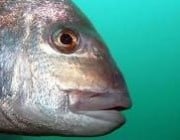
2016 Roughy Survey Shows Continued Recovery
Under contract to SETFIA, Tasmania’s CSIRO has completed another survey on two features known as St Patrick’s and St Helen’s off eastern Tasmania where roughy aggregate to spawn. St Helen’s Hill is typical of a roughy hill being a conical seamount rising from a depth of 1,100m to 600m. This is the 5th acoustic survey in the Eastern Zone since 2006.
CSIRO use an acoustic optical system or AOS that they have designed in Hobart. The AOS emits multiple frequency signals to accurately calculate the amount of fish present. The AOS is towed 200-300m above schools of aggregating roughy. By using multiple frequencies it can distinguish between roughy and other gas bladdered fish. AOS is particularly effective in assessing aggregations of deep-sea fish and has also been used in Australasia to assess blue grenadier (known as hoki in New Zealand).
The survey encountered the strongest and warmest surface currents to date with fish at St Patrick’s being very disrupted and not settling on the hill as it did in previous years. As is normal the largest aggregations were found at St Helen’s hill. The video below shows images of live orange roughy captured by the AOS on St Helen’s hill at 800m.
https://youtu.be/RNt-VDOZKBo
This year the survey team loaded the AOS onto a small vessel using a modified boat trailer before it was taken out to the trawler contracted to complete the survey. This reduced costs to move CSIRO’s scientists and their equipment to the mainland where the survey vessel was domiciled.
The other change in the survey this year was that the cost of the survey will be charged directly to quota owners through their levies. This meant that there was no need to catch and then sell fish to finance the survey which reduced sales risks to the project.
Results are still being analysed but populations appear to be stronger than in previous years and provide more data about the recovery of Australia’s orange roughy stocks. A stock assessment will consider this data in 2017 the Commission will use to set a total allowable catch from the 2018/19 fishing year.




